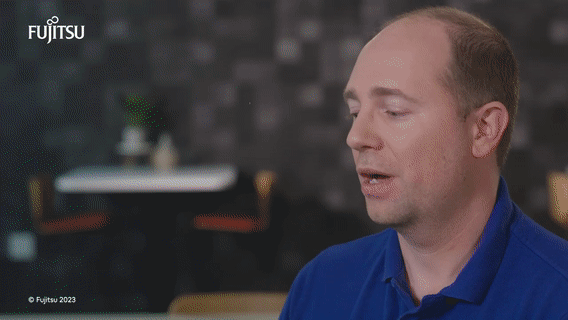
Fujitsu board-ready study
A lot of organizations that want improved broadband services often hire a consultant to do a feasibility study. You have to assess the market, create an initial design, and decide on the business model. What’s different with Fujitsu is that we have a more comprehensive view. A lot of feasibility studies are focused on design and construction. While that is a necessity, we also look at Day 2, which is what happens after construction, standing up the business, operating it, and acquiring customers.
We live the Day 2 all the time with our current clientele. Network operations and ongoing maintenance is critical to keeping the customer experience positive. We make sure to cover Day 2 of the broadband business in our board-ready study. It’s not limited to design and build, which we do very well, but also includes operations and maintenance.
Fujitsu as a broadband consultant
It’s important that the board-ready study consultant is also the one performing the broadband deployment plan because now you don’t have it broken down by different parties. There is no risk of things going missing or miscommunicated during project handoffs. We are the single point of accountability, so you don’t have to hire and manage multiple specialty vendors. We ensure that the right solution is delivered for the customer. And you only have to worry about working with one point of contact.
Broadband deployment plans
The feasibility study is a necessity. You have to start with it. The unfortunate thing is if you don’t have something that takes your study to a construction contract, you really can’t go any further. So, the advantage of what we do at Fujitsu is the board-ready study, which is designed to have the end in mind. The board-ready study functions as an input to all of the design validation that needs to be done so you can get to that construction-ready contract. The second phase is what we call the broadband deployment plan. This takes that study deliverables and validates all the design parameters (e.g., pole inspection, site audit, fiber route checks, and complex road crossings) in the field. That helps us make all the adjustments needed to the bill of materials (e.g., network equipment, deployment services, and construction materials) and any other changes to the network design. The broadband deployment plan finalizes the network design and the cost of the bill of materials facilitates the construction contract, which is what is needed to start a build.
Setting up your internal team
Most of our customers have had to present their broadband business proposal to board of directors, leadership council, city council, or stakeholders. It’s important on the customer side to have a champion, someone who can marshal internal resources for the project. You also need a project manager who will be the single point of contact for routine communication. This helps us to build the rapport necessary for sharing information that will help us frame the best broadband solution. Our close relationship between the project team and their leadership help us keep an ear-to-the ground on what the community is experiencing and desires in a broadband solution. In turn, this ensures that what we’re finding in our market assessment is echoing what our customers are hearing from their constituents or greater community.
Getting your board’s approval is the most important milestone so you can advance to the next phase in the board-ready study. If there is synergy with the study’s findings and the voice of the community regarding existing broadband services, you’ll achieve a strong buy-in from the board or council.
Speed test crowd sourcing
This is one of the things that we do differently from a lot of consultants. It’s important to engage the community and get an understanding of what experiences they are having with their broadband internet services. The speed test crowdsourcing allows us to gather an overwhelming amount of data points. This is a better method than traditional surveying. In a typical marketing research survey, you may only get about a 10% response rate. It’s not really as deep and extensive of a response than if you were collecting data that’s already being done, day to day, with people running their own speed test and in their home. We’re able to source that from a private data collector. We get a better Return on Investment (ROI) with speed test crowd sourcing versus the traditional marketing research. You acquire more comprehensive evidence of speed tests at a fraction of the cost and time. Speed test data findings can build confidence in your broadband business plan and is more representative of the community. It helps you make a persuasive case for receiving grant funds.
Risk assessment and management
At Fujitsu, we employ simulation modeling for the broadband network financial analysis. We utilize parameters for cost and revenue risk items that essentially measure all the plausible outcomes that can happen. This gives us a much more comprehensive view of the financial results than if you were just going to assume a single point estimate for all these inputs. We do this in a way that allows your board to digest something visual and comprehensive so they can understand what risk means to their broadband business plan and quantify it in dollars for them. This approach to financial analysis bolsters confidence in your leadership team’s decision whether to proceed in deploying a broadband network.